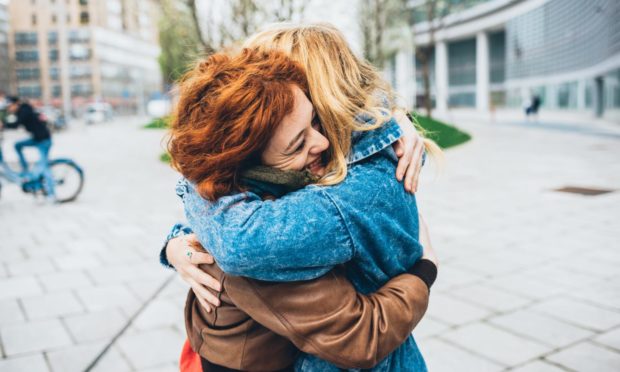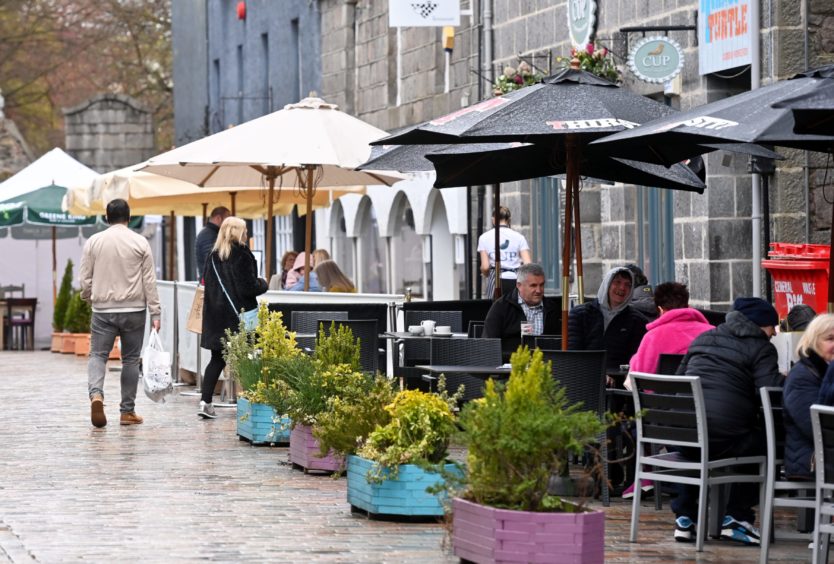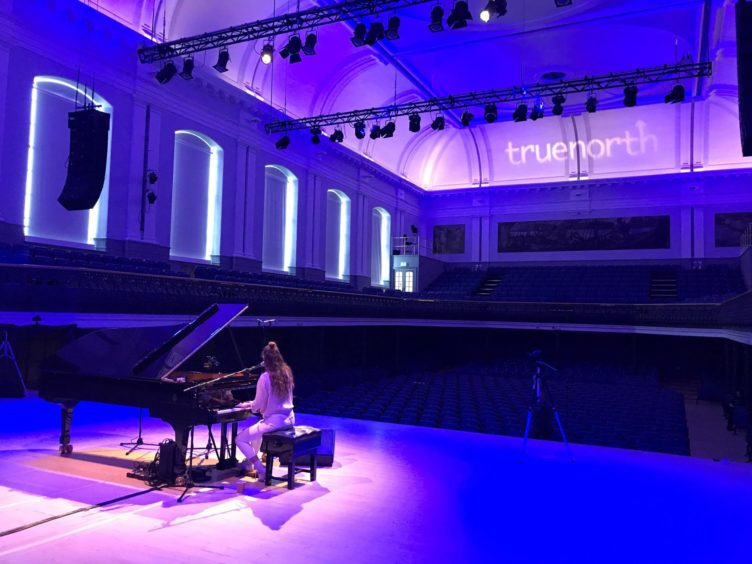So, this is the last big weekend of the lockdown.
The last time you’ll have to hunch under a cagoule, sheltering your pint from the rain. The last time seeing your relatives requires a brolly. And, crucially, the last few days before we (the whole of Scotland excluding Moray – hang in there, pals) are allowed to hug again.
Nicola Sturgeon owned up to being “a wee bit emotional” as she made the announcement earlier this week, and at first I was absolutely with her.
I’m a hugger. Or I was in the Before Times. Not sure who I am now. The tiny, everyday things I’ve missed most in the last year – having a cup of tea at my friend Jen’s kitchen table, and being able to hug her afterwards – are theoretically all about to resolve themselves. So why am I feeling panicky?
Is it giddiness or panic?
On the first weekend of May, when travel restrictions were lifted, I left my village for the first time in months to meet friends I hadn’t seen since October for dinner in the city.
Our giddiness at being able to sit on a fumy main road pavement quickly became overwhelming, and we fled to the space of someone’s garden, our plastic chairs as far apart as they could go.
I’ve felt this on the three or four occasions I’ve come too close to larger groups of people in the past year: a quickening instinctual panic; some sort of primal flight response.
Stranger danger
It makes sense. In order for the social distancing restrictions to work, we had to internalise the idea that other people’s bodies were dangerous. Stranger danger. Once you start considering the amount of germs out there, bearing in mind your FACTS and your Hands, Face, Space, why would you ever want to let someone near you again?
Scottish theatres and gig venues are theoretically allowed to open from Monday (May 17) as well, but under current restrictions audience members will still need to be two metres apart at all times. A recent press release from the Scottish Theatre Producing Consortium – which includes all three Aberdeen Performing Arts venues – highlighted that 96% of venues would be operating at around 5% capacity, which is financially unviable for them.
But even assuming that there were concerts and theatre shows to attend, would you want to right now? Pre-pandemic, I loved theatre, gigs and cinema; now the idea of pushing through a crowd to jam myself into a mosh pit, or sitting in close rows of other people’s breath for a two hour film or performance is terrifying.
It’s a valuable insight into what our pre-pandemic “normal” society must have felt like for an immunocompromised person, or as someone who suffers social anxiety.
Social distancing has made us more inclusive
Here’s hoping we – the lucky majority of us – don’t forget this as soon as we’ve had our second jags, because there are so many ways in which the space we’ve had to create around ourselves can help us become more inclusive.
My partner, who used to run a club night in our village sports centre and moved it online in April last year, reports that his regulars have asked him not to cancel the Zoom disco once the venues open up. Amongst his living room clubbers are carers and other isolated people for whom this monthly chance to dance with an on-screen crowd (all in their own individual squares) has been a lifeline.
Personally I hope that the handshake never recovers from its Boris Johnson-contracting-Covid PR disaster
Many parents of small children have also felt the benefits of flexible working from home. My novel Scabby Queen came out in June. I’d expected to spend the year travelling up and down the country for promotional purposes, fielding teary, guilt-inducing phone calls in cheap B&Bs because I’d missed my kids’ bedtime yet again. Instead I’ve got all too used to popping up for Zoom book groups wearing earrings, a nice top and my scuzzy old pyjama bottoms, while the wee ones sleep upstairs.
A hug isn’t the only way to show affection
Perhaps we could also dial back on mandatory physical contact in formal settings? The awkwardness of hugging and air-kissing on introduction, which un-continental Scots were never quite at ease with (is it one peck? Two? There’s always some showboaty types who go for three) might take a while to resurface. And personally I hope that the handshake – that weird, sweaty macho mini-wrestle – never recovers from its Boris Johnson-contracting-Covid PR disaster.
I’m going to spend this weekend steeling myself to the possibility of physical contact, but also making sure that anyone I’m approaching is totally comfortable with it.
Please know that if I offer you a wee pat on the shoulder, it’s meant with all the love of the tightest bear hug.
Kirstin Innes is an award-winning author and journalist. Her past novels include Fishnet and Scabby Queen



